Fantastically original 1949 Jowett Bradford ice cream van
Posted by Chris Graham on 26th October 2022
Mike Neale spotlights Harry Larcombe’s fantastic, pre-restoration 1949 Jowett Bradford ice cream van; it’s an absolute gem!

Harry Larcombe’s fantastic, pre-restoration 1949 Jowett Bradford ice cream van.
The ‘Bradford by Jowett’ (as they were badged) was launched in early 1946, although it was effectively a restyled version of the pre-war Jowett 8hp commercial from 1938. Bodies were supplied by Briggs Motor Bodies, initially in Dagenham, but soon from their new Doncaster factory, some 30 miles from Jowett’s factory in Idle.
Bradfords were simple and basic, but this actually increased their popularity with some small businesses and farmers as they were being cheap to buy and run and easy to work on. They were exported across the world to over 70 countries.
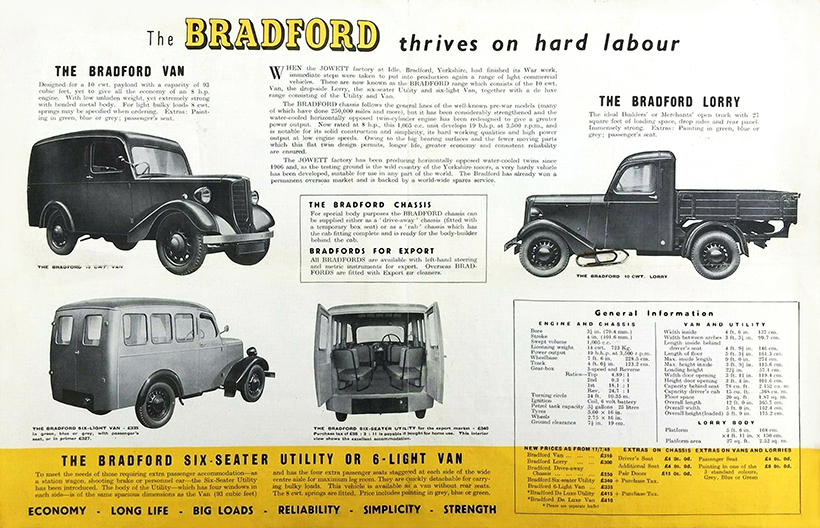
Extract from a 1948 Bradford sales brochure.
Initially only a 10cwt van version was available with a load capacity of 93cu.ft., but pickup (or 10cwt lorry), 6-light van, 6-light utility (a six-seater estate) and 4-light utility versions followed. Larger windows were usually fitted to the rear doors of the utilities. The de-luxe versions of the utility and van had a chrome radiator and headlamps. A chassis and front end, with or without the cab, could also be purchased for coachbuilt bodies to be fitted.
The first ‘CA’ type had 6V electrics and the 1,005cc 19bhp side-valve flat-twin engine ran on in-situ cast white metal bearings. The origins of the engine dated back to 1906 and Jowett’s original 816cc two-cylinder engine, which was identical in layout, but gradually improved over time. A three-speed non-synchromesh gearbox was fitted. There was no water pump or fan, the engine relying instead on thermo-syphon cooling. The wheelbase was 90in. and a 6½in diameter clutch was fitted.
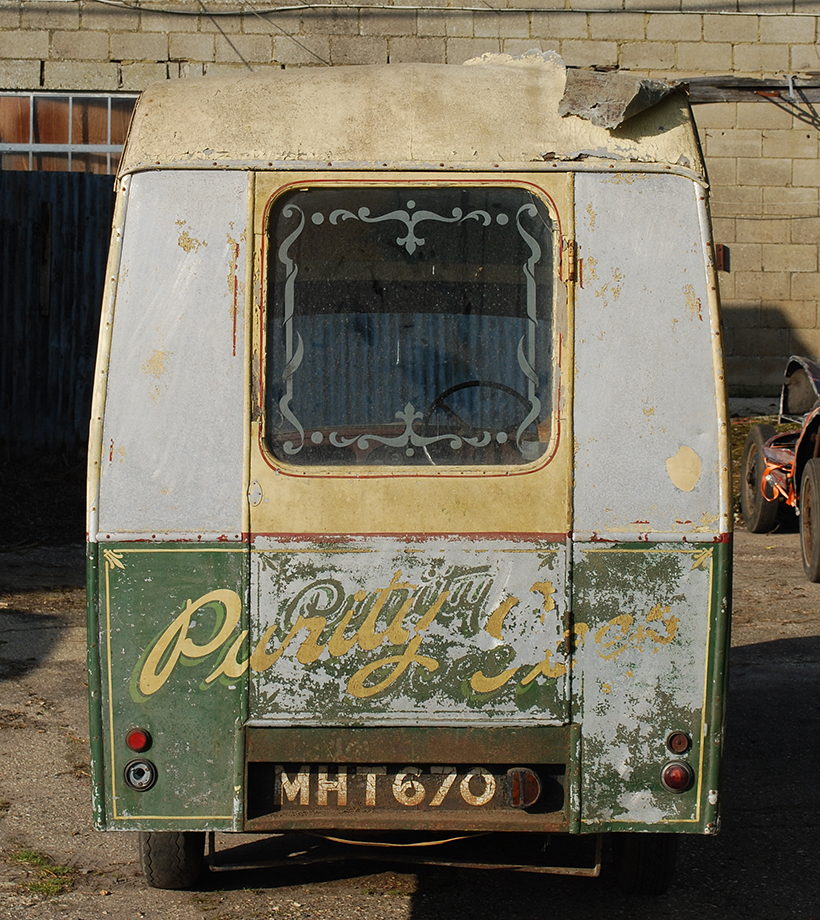
Jowett Bradford ice cream van from the rear.
The ‘CB’ arrived in 1947. The 1,005cc engine now had shell-type bearings and was fitted with a belt-driven dynamo and a Zenith 30VM downdraught carburettor.
In 1949, the ‘CC’ type was introduced with a redesigned engine, still 1005cc but slightly more powerful at 25bhp. It had 12V electrics. A Borg and Beck 7¼in clutch was now fitted as well as a three-speed gearbox with synchromesh on second and third.
A radiator cowl and fan were fitted to export models of the CB and CC for tropical climates, and an optional extra on home-market vehicles. The plan had been to replace the Bradford with the new Jowett CD, the story of which was covered in our April 2021 issue, but sadly this was not to be.
Production ended in 1953 with the demise of Jowett Cars Ltd. Almost 40,000 Bradfords were built, and it was the only post-war vehicle that actually turned a profit for Jowett.
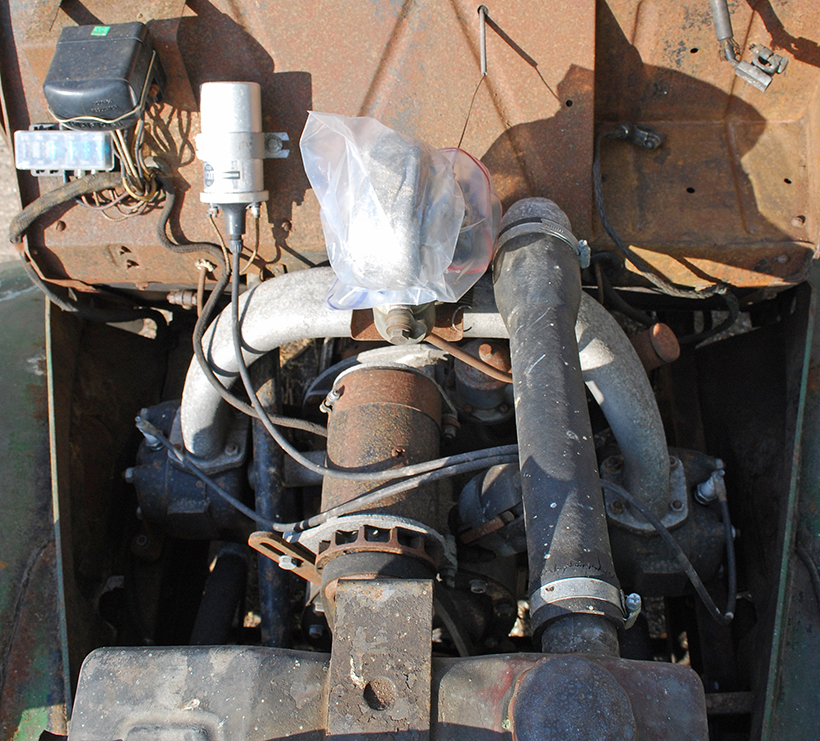
The engine is the original, but has been rebuilt.
Barn-find Bradford
This barn-find 1949 Bradford ice cream van was supplied new to A. Cavaciuti of Chippenham in Wiltshire, whose livery it amazingly still wears. It is now owned by Harry Larcombe from Whitby, who has had it for almost 20 years. He has several Jowetts, some restored and others awaiting restoration, including the oldest known surviving CA Bradford, which is sadly incomplete and in need of much work.
“I have owned a lot of old vehicles, but Jowetts are my favourites,” explains Harry. “I was born not far from the factory, although at that time, in the 1940s, it was turned over to the war effort rather than car production. I’ve never got around to restoring the ice cream van, apart from getting the engine rebuilt about five years ago by Michael Kavanagh in the Jowett Club.”
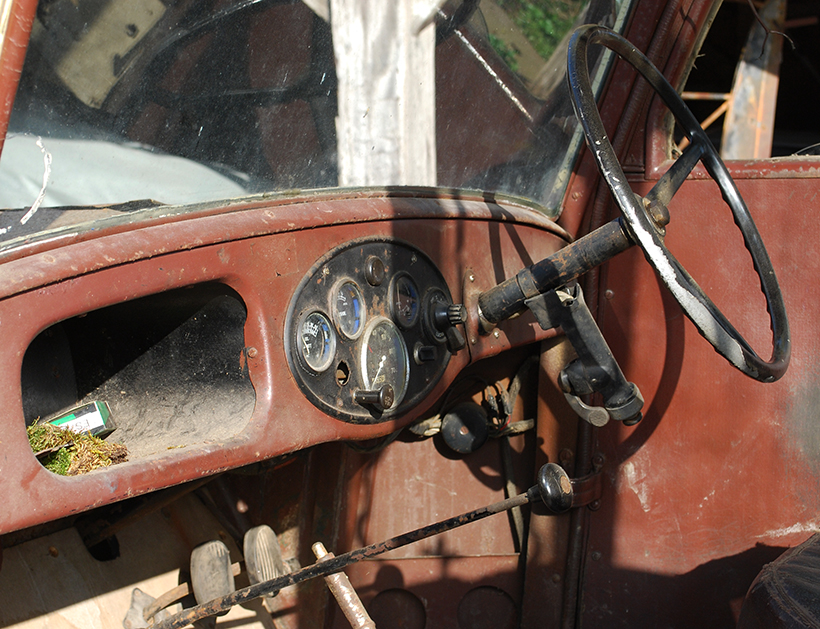
The van has a basic cab, of course.
It is now the ice cream van’s turn, however, and Harry has entrusted its restoration to Chris Spencer of Flat Cap Restorations in Berkshire. The restoration will be sensitive, reusing and refurbishing as much original material as possible. However, a vehicle is only ever original once, some of this one’s originality has reached the end of its life, and will have to be replaced by new material. Before that happens, however, I was able to create this lasting record of the vehicle in its original state, in much the same way as local authorities often insist upon a full photographic record before necessary restoration or significant changes to historic buildings.
Unsurprisingly, Chris is something of a Jowett marque expert. Over the years he has restored a couple of Bradfords, several Jupiters, numerous Javelins and a handful of vintage Jowetts.
“It’s nice getting a van to do, as they are a bit more varied,” notes Chris. “If the livery is right and they are finished correctly they are very appealing.”
“This ice cream van hasn’t been messed about with. Briggs-built the body, and they also did the standard vans,” Chris explains. “It has a standard Bradford van engine and chassis, not lengthened, widened or anything. It shows a mileage of 28,550, which we think is genuine. The engine is the original, and it is running, having already had work done on it.”
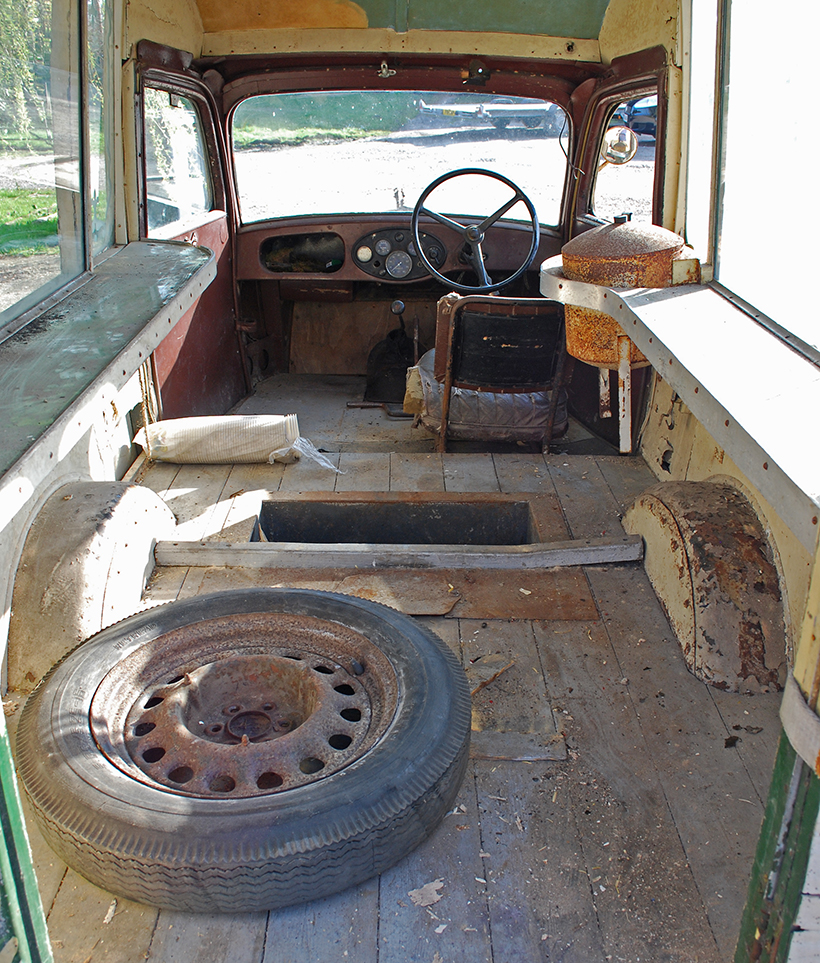
Most original interior fittings are long-gone, but the water tank is still in situ, behind the driver’s seat.
The ice cream van is all steel from the bulkhead forwards. The doors are ash framed and steel skinned. Behind the doors, it is ash framed and aluminium-clad, except for the rear wings which are steel. The roof is clad with plywood and canvas topped, which is still the original, but will need to be replaced.
“We’ll have to take off the rain channel bead, as the canvas roof covering wraps into it. It might be feasible to replace it with canvas like the original, which will need to have dope applied to the surface. It is what is done on vintage aircraft,” Chris notes, “or we may use vinyl and colour it cream with a matt lacquer coating.”
The ash frame is pretty solid, but there is unfortunately some woodworm in the vehicle which will need to be treated, with a lot evident below the driver’s seat; one reason why in this case conservation isn’t viable. It will need a new floor fitting and a number of panels are corroded. Fortunately, the bottoms of the doors are solid, as are the lower rear side panels. The offside timber A-post will need to be repaired. Bradford vans tend to fail on the door hinge. The interior panelling has suffered from water ingress and some will need to be replaced.
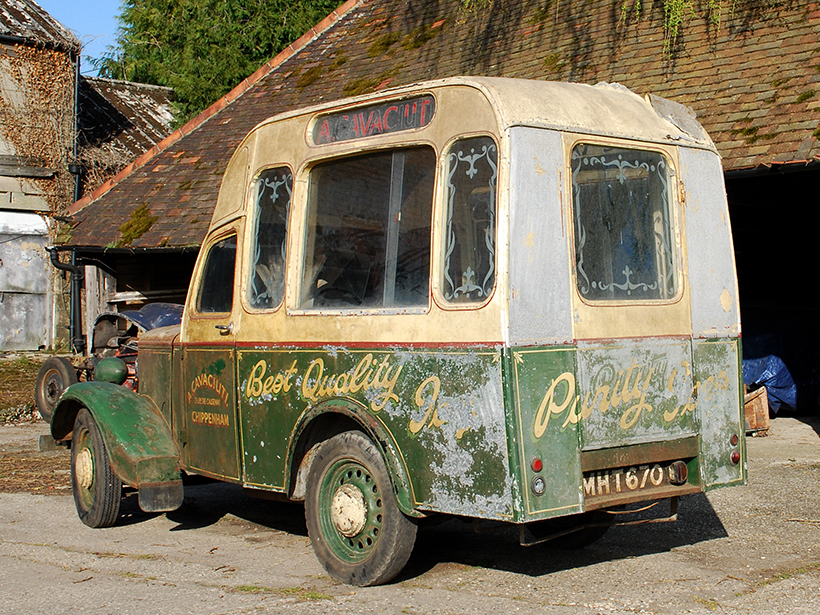
Another view of the van from the rear.
“Lots of people have said to me, ‘oh you need to keep it just like it is with that original patina,’ but this van needs radical action if it is to survive. You can’t just keep the patina – the whole thing will fall apart. But we will conserve as much as possible,” explains Chris. “The van will be repainted. We’ll get the paint colour-matched by spectrometer and probably use two-pack paint, as there are multiple substrates – steel, aluminium and wood – and a sign-writer will recreate its original livery.”
Electrics are 12V from new. The semaphore indicators are mounted higher up above the doors than on a standard Bradford van. The spare wheel carrier is also unique to the ice cream van. The petrol filler cap is in the floor on the passenger side, rather than outside on the side panel on standard vans.
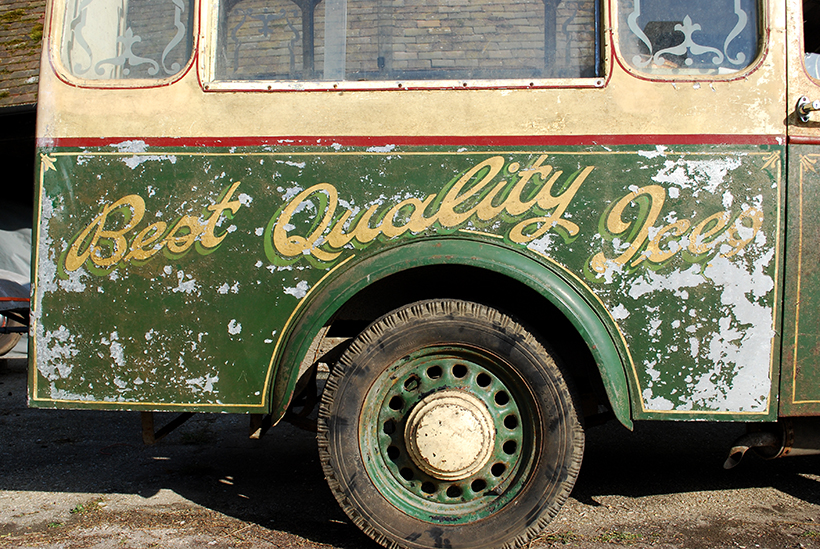
The back end is predominantly aluminium, hence the greater paint-loss compared to the steel front section.
“The etched glass in the windows and the ceiling decoration inside are unique to this van,” Chris tells me. “The glass will need to come out to treat the woodworm. The back window has a crack in it, but we will probably keep it, as it would be very hard to replicate.”
There is a water tank mounted inside behind the driver’s seat with a tap below. An enamel bowl would have been mounted underneath.
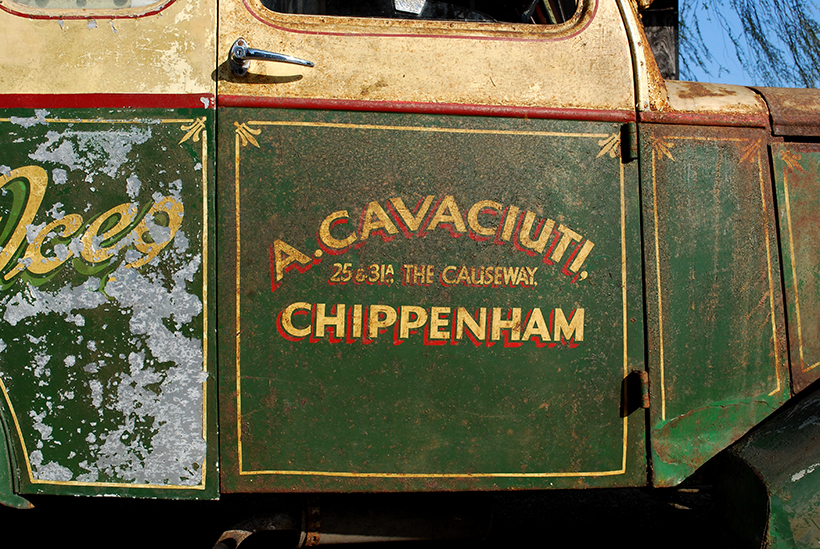
Do any surviving members of the Cavaciuti family remember this van?
The Jowett Car Club is an invaluable resource, having its own spares department housed in a 4,000sq.ft. warehouse in Bradford, covering all models from 1910-54. This includes mechanical parts and body parts. Some items, such as spare wheel trays, have been reproduced by them to original patterns. It is run by club members on a voluntary basis. The club currently has about 500 members, and lays claim to being the world’s oldest one-make car club, being founded in 1923. “I don’t know of a single club member’s car that is off the road due to a lack of spares,” enthuses Chris.
There are four original Bradford ice cream vans known to survive. One is in the Bradford Industrial Museum, one in Hull Streetlife Museum of Transport, one known as ‘Snow White’s ice cream van’ and this one. Additionally, there are two recent recreations that have had ice cream van bodies built onto Bradford vans to look like the originals, including one at Liverpool Docks.
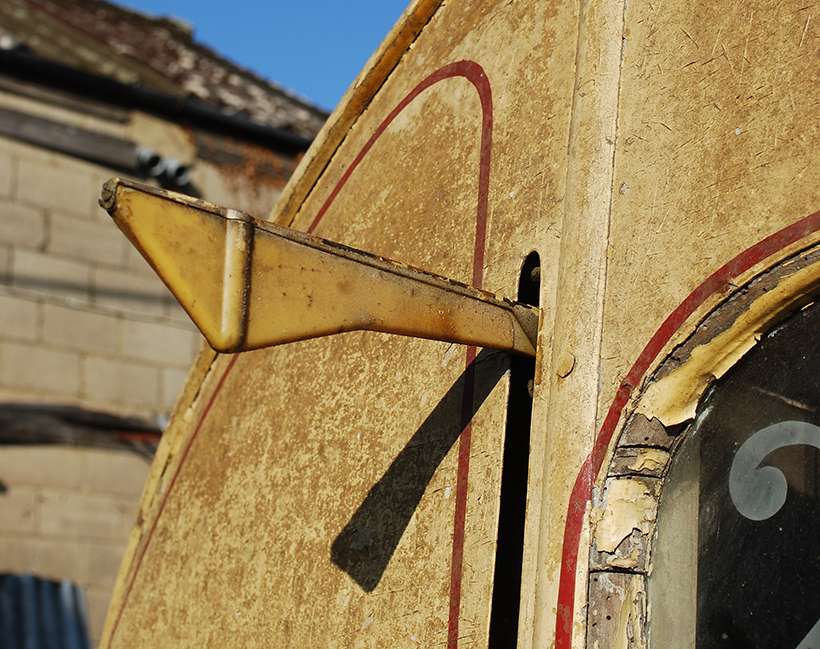
Trafficators are mounted higher than on standard vans.
Chris and owner Harry would be interested to know if there are any surviving Cavaciuti family members who can remember the van, or to see any old photos of it in service if there are any out there.
This Bradford ice cream van has certainly drawn a lot of attention, winning best barn-find at the NEC Restoration Show in March 2022. Once it has been restored, Harry intends to take it to as many classic car rallies as possible, so keep an eye out for it in 2023.
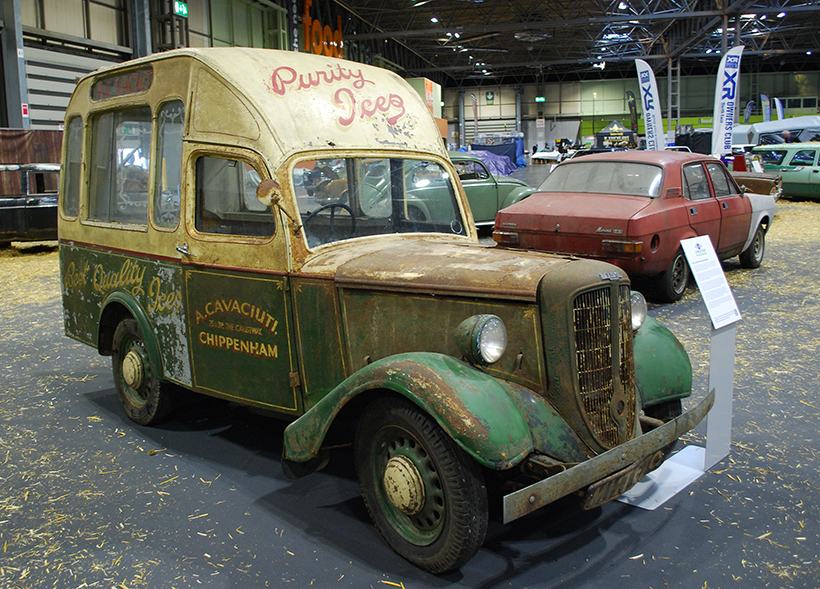
The van as seen at the 2022 NEC Classic Car Show.
With thanks to Harry Larcombe and Chris Spencer for their help with this article. For further reading, I recommend Noel Stokoe’s book, The Jowett Bradford – Jowett’s Unsung Hero, published by Fonthill in 2019.
This feature comes from the latest issue of Classic & Vintage Commercials, and you can get a money-saving subscription to this magazine simply by clicking HERE
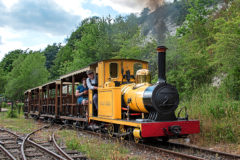
Previous Post
Amberley Museum’s Steam Show report

Next Post
110-year-old American battleship set for restoration



